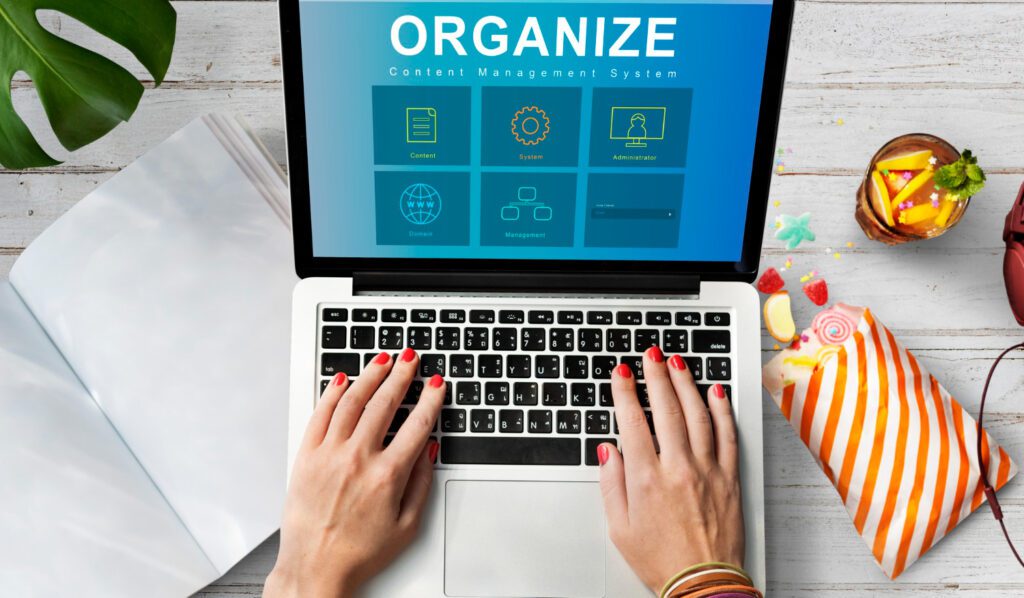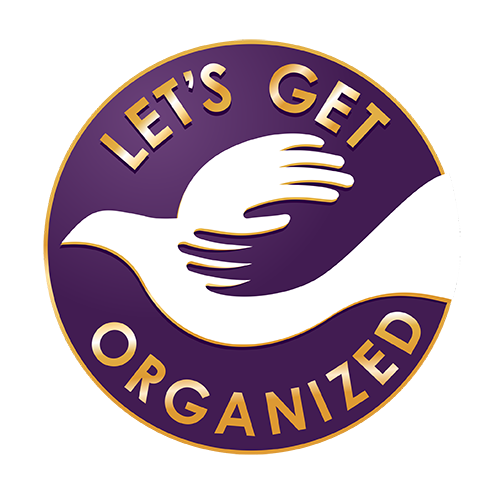Virtual Organizing:
Not Just For a Pandemic
Introduction
After sheltering in place for the majority of 2020, and living for several years in an environment that continues to be uncertain, clients are looking at their homes and offices as places where they can still exercise a modicum of control. Creating systems, being organized, and feeling the attendant sense of peace is crucial to that exercise. But how is that possible if we can’t let people into our homes or workplaces, for any number of reasons?
Virtual Organizing
Connect
Enter Virtual Organizing (VO), which uses technology to connect organizing professional with client. Over a video platform, or even with still photos and a phone, the professional can guide the client through the organizing process, as long as the client is physically able to do the work.

Create a New
System
A virtual session can be useful when someone needs to create a new system at work and internal guidance is non-existent, is still working from home and balancing personal and professional lives, or may be comfortable with video technology but shuts down when faced with having to create a digital file system.
Virtual Organizing is a Lifeline

VO is good for clients’ physical and mental health.
Many of my clients are chronically disorganized and/or have brain-based conditions that inhibit their ability or desire to get organized.
Depressed clients may take to their beds and not get up for days. Result: a neglected house.
A virtual organizing session forces the client to get out of bed, gives a purpose to their day, gets their blood flowing, and encourages them to get things done. Moving around, doing the actual organizing, brings oxygen to the brain, promoting focus and enhancing mood.
People with Hoarding Disorder or OCD can get help without having to let someone in. The organizer sees only a screen- or photo-worth of space, removing feelings of embarrassment or shame.
For people who live alone, Virtual Organizing is a lifeline. Studies have shown that social isolation and loneliness can contribute to premature death. The virtual session may be the only social interaction a client may have that day.
Brain: Organize Thyself
Neuroplasticity is the brain’s ability to reorganize itself by forming new neural connections, essential for coping with a constantly changing environment.
Virtual Organizing creates new neural pathways.
Since clients must physically participate in the process, they learn new skills. During on-site sessions, the organizing professional may do most of the work, and the client may tune out or get distracted.

Repetition, Repetition, Repetition
Repetition is the key to building neural pathways. Virtual Organizing sessions are often shorter and more frequent than on-site sessions and focus on organizing concepts. This serves clients with attention challenges by:
- Keeping the momentum going
- Preventing backsliding
- Creating more structure and accountability
- Supporting clients to overcome procrastination
The organizing process is sped up, and clients gain insight into their thought processes, emotions, and perspectives.

author
Gayle M. Gruenberg
Gayle M. Gruenberg, CPO-CD®, CVOP, is the Chief Executive Organizer of Let’s Get Organized, LLC, an award-winning professional organizing firm based in Bergen County, New Jersey. Gayle is the creator of the Make Space for Blessings™ system. LGO works with busy families to help them find more time, space, money, and energy and connect their lives to their core values through being organized.
Note: A version of this article was originally published in the November 2020 edition of 24/Seven, the magazine of the lifestyle brand Change Your Attitude, Change Your Life.
